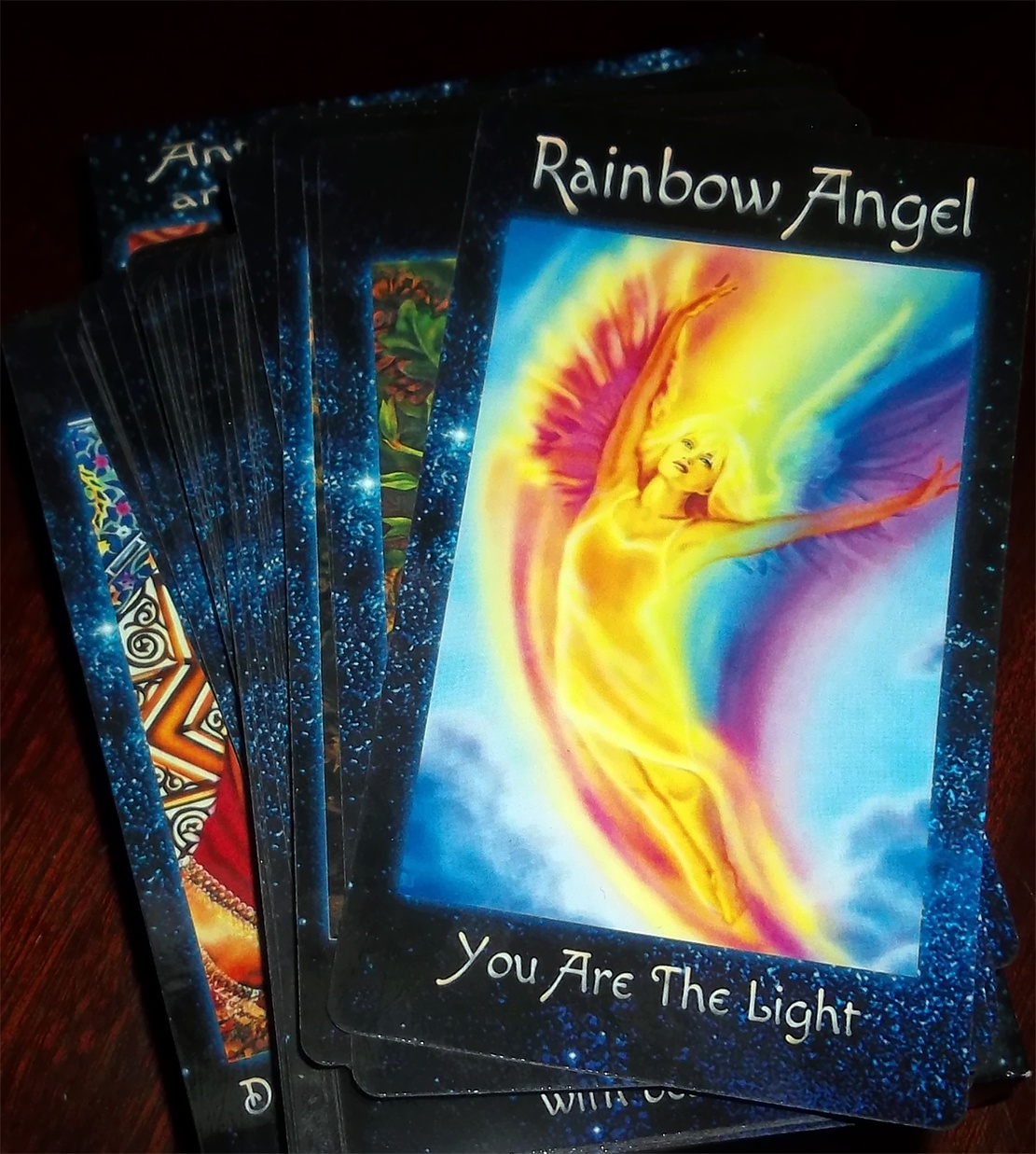Love-Centered Thinking: A Path to Transformation
- Details
- Written by Gerrit Gielen

Everything in nature is subject to a rhythm.
Think of the seasons, for example, or the alternation of day and night. This rhythm is part of nature and we experience it as self evident. The natural unfolding of life is only possible thanks to rhythms. Without night, our Earth would heat up into a boiling, lifeless desert, and without day, she would freeze. Both are necessary for the evolution and growth of life.
Less self-evident is that we find that our inner life is also subject to a rhythm. There, the alternation of light and dark can also be found. Periods of light, in which everything runs smoothly, are alternated with difficult periods of fear, anger, despair, and doubt. Still, these periods also serve their purpose. Just as all life on Earth is developing, because of the alternation of light and dark, we as humans also grow because of rhythmic variation. Especially difficult periods, in retrospect, often turn out to be very instructive times that bring about inner growth and deepening.
However, the balance sometimes seems to be lost. Darkness starts to dominate and we lose our connection with the light; we cannot imagine that it will ever return. The night no longer becomes day; the darkness appears to be permanent. The natural rhythm of life comes to a standstill, and there is no more rhythm, no more growth, only stagnation.
Why is that? Why is it that we sometimes do not go along with the natural rhythm of life and get stuck in the dark phase?
In this article, I want to demonstrate that this sense of being stuck in the dark is often caused by a wrong way of thinking; that by thinking from fear, we artificially lengthen the darkness in our life. I want to also show what we can do about this, how we can teach ourselves to think from love. Thinking from love is the natural way of thinking and is aligned with the rhythm of life and stimulates inner growth.
Our thinking
We have a great many ideas and opinions about the world around us, and many of them do not come from ourselves, but are handed to us by the world around us: by the newspapers, television, the internet, and all the people we meet who are often immediately ready to voice their opinion about something.
Our thinking always starts with assumptions about the world around us. This is comparable to mathematics, which begins with the assumption of a number of axioms: principles that cannot be proved. From there, you use reason. You can, for example, assume that the shortest distance between two points is a straight line, where you arrive at traditional geometry. If you assume that this is not the case, then a different form of geometry arises that is useful: non-Euclidean geometry that turns out to be very applicable in modern astronomy.
Our thinking is just like mathematics. If you look properly at the origin of people’s opinions, you can then see that they are based on a number of assumptions that are considered to be true. Generally speaking, an idea can always be taken back to either fear or love.
Thinking from fear
Thinking from fear always leads to a dualistic view of reality. One thing or situation is good, the other is bad, and we have to be watchful for the bad thing or situation. That view of reality makes our world unsafe.
Let us say we feel threatened by a certain group of people, then we begin to think of them from fear. Our thinking is then inclined to emphasize the differences: they have a different religion, other standards and values. And they want to impose their standards and values on to us, so they are dangerous. That way of thinking leads to a belief in duality, which only confirms and magnifies the original fear.
And what happens within us as a result of that way of thinking? The original, irrational fear is being made in to a definite worldview. With the help of our thinking, an immense structure of thoughts, meanings, and “facts” is constructed that create a permanent dwelling for the fear. This structure starts to work in us as a kind of filter through which we perceive reality: everything that is congruent with that fear we perceive enlarged, and the rest we no longer see.
Thinking that way causes our inner world to get filled with “thinking castles.” And because of these thinking castles, it becomes almost impossible to recognize the original fear that forms the foundation of the construction. This fear is hidden behind a “masonry” of opinions and concepts that validate and support it. However, the true inhabitants of the structure are fear and anger. Wherever there is such a castle, the energy is no longer flowing; light and life disappear from our inner world. We radiate inflexibility and bias, and our inner development stagnates.
A tangible example can clarify this. Suppose a woman has a certain fear of men. From that fear she is going to think about, perceive, and interpret the behavior of men. She then concludes that men are unreliable, domineering, violent, and superficial. Not only does this way of thinking influence her relationships with men, it also leads to her suppressing her own male side. She does not acknowledge the positive aspects of male energy, like drive, standing up for yourself, and purpose. Thinking this way damages her own ability to stand up for herself and purposely set boundaries. Her female qualities of empathy and sensitivity can get “over-developed,” which can weaken and exhaust her. The consequence of this is she will experience the world around her as even more masculine and hostile. Her fears will start to dominate her even more.
This is how thinking from fear leads to a negative spiral that sustains itself: we begin thinking from fear, and then this thinking leads to an explicit dualistic view of things. A worldview, a “thinking castle,” is created that hides the original fear and makes it difficult to honestly and lovingly face it. Thinking from fear blocks the natural flow of energy and suppresses something within ourselves. Eventually, this dualistic worldview reflects back upon ourselves and reinforces the fear.
Thinking from love
When we begin to think from love, we will become aware of the inner unity of all things. When we look at people from different cultures with love, for example, then we no longer see the differences, but mostly the commonalities. We realize these people also long for a happy family and a nice job. They also want the best for their children and a harmonious existence with others. The differences are only external.
Strong, outspoken opinions often emphasize a certain duality: this is good, that is not. Behind these opinions, fear is hiding. Opinions that are voiced from love are much softer and more nuanced. They always show understanding for what is different and stress the inner unity and connection that exists. On a deep level, the universe is one; on a deep level, humanity is one.
Instead of building thinking castles for our fears, we can focus our attention on our fears. We can use our thinking to look through the masonry, break down the walls, and face the fear head on. Fears are like children that have lacked love. Those children do not want “castles” for protection, they yearn for warmth, love, and acknowledgment. They want to be seen and are longing for light.
Love is the power that connects the outcast with the unity.
Our inner world is not separate from the outer world, everything is part of the same unity. By thinking lovingly about others, the love flows toward them. They are touched by it and it can influence and change them. The realization of the inner unity of everything resides deep within every living creature. By radiating love, you touch this knowing and activate it. Love dissolves the duality, both in your inner world, as well as in your outer world.
This is the reason that Christ says: “Love your enemies.” For love changes your enemies into friends. This goes both for the enemies outside us, as well as for the enemies within us: fear and anger.
Learning to think from love: practical tips
The shift from thinking from fear to thinking from love is not an easy one, because fear always has an inclination to move its attention outward: to the object of our fear.
Let us say we are afraid of a spider, then we focus all our attention on the spider, which is outside of us and not on the fear itself. Instead of settling down with our fear, we focus our thinking power on the question of how we can destroy the spider, how we can avoid more spiders coming inside in the future, etc.
Things become even harder if we have built an entire thinking castle around our fear, which makes it almost impossible to feel it, because it is hiding behind walls of opinions and ideas.
Below is an action plan that might help you.
- Be prepared to honestly face your fears. Be willing to accept that behind a lot of your opinions and ideas there is fear and/or anger. This is a very difficult step. Ask yourself the following question: “Could it be that a lot of my notions, which I have for years proclaimed with definite certainty, are based on fear and anger, and not on love?” To find the courage to discover an honest answer to this question is the first and biggest step.
- If you are prepared to do the above, then find a quiet moment and guide your attention inward. Try to feel your fear. Steer your attention down to your abdomen, where negative emotions usually are hiding, and say: “Come on out, you are allowed to be here.” Be silent and imagine that scared or angry children slowly come walking toward you from the darkness. Let love flow toward them and welcome them.
- Think about opinions and ideas that you adhere to with a certain vehemence; they can be about the world, about people around you, about your relationship – whatever. Now imagine that another person is proclaiming that same opinion to you. And do not pay so much attention to what he says, but to what he is emanating. Is it love, or something else? Does the energy flow from his heart, or does it come from somewhere else? And if it is something other than love, what is it?
Examine that, and also look closely at the person you have chosen to express your opinion. Who is it, and why did you choose that person? This choice also has meaning. You can, of course, do this exercise with you expressing the opinion, as well, and watch yourself from a distance. What are you radiating?
By repeating the above steps regularly, we can gradually dissolve the inner blockages that disturb the natural rhythm of our lives, the thinking castles. A thinking castle works like a dam, which blocks the natural flow in the river of our lives. If we eliminate the dam, then life and light can again flow through.
Periods of darkness are part of life, and the flow of life leads us back to the light by itself. But to be able to go along with that flow, we do have to be willing to face the darkness in ourselves, honestly and lovingly. This is the power of thinking from love.
© 2024 crystalwind.ca. All rights reserved. We track all IP addresses with sniffer technology. Using a Proxy/VPN will not hide your IP address.
Liked this article? Dive deeper into personal growth and wellness! Check out CrystalWind.ca for spiritual wisdom or explore AromaWorx.ca for natural well-being tips. Spread the positivity—share this with friends on their happiness journey!
Let’s Chat! Drop Your Thoughts Below! ![]()
Related Articles - Journey
Latest Articles
Dive into the Mystical World of the Crystal Wind Oracle Deck!
Get All the Enchanting Details Now!
NEW Expanded Boxed Edition!
Now with 58 Cards for Richer Wisdom!

Imagine a world of inspiration and healing, free for all—made possible by YOU!
Donate Now—Ignite the Magic at CrystalWind.ca!

Epilepsy - Finding A Cure
Your donation can make a difference!
Help us find a cure – donate now!
















































